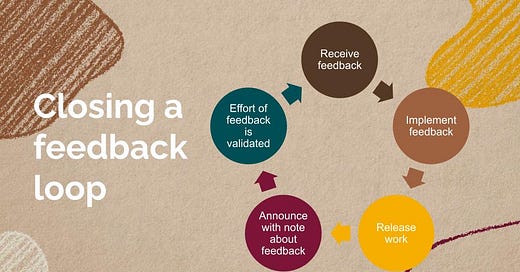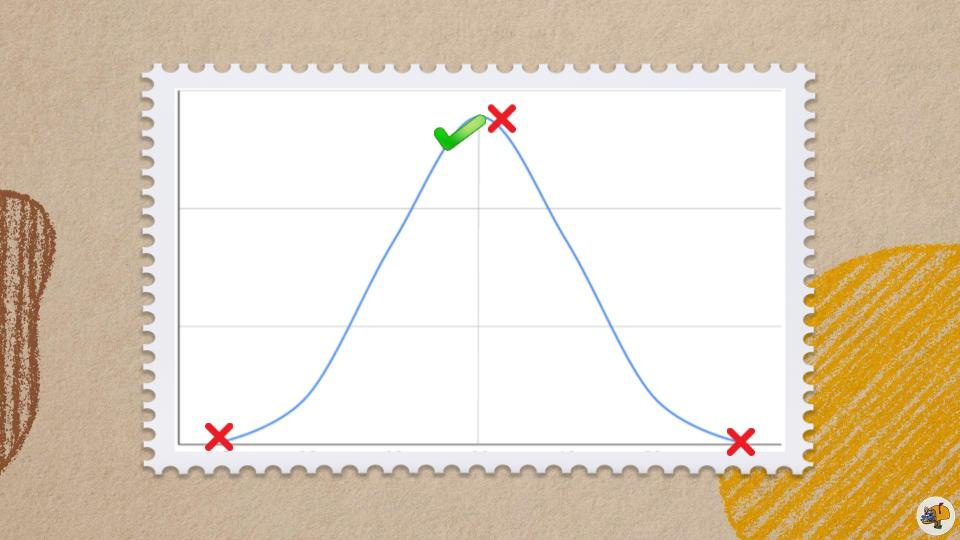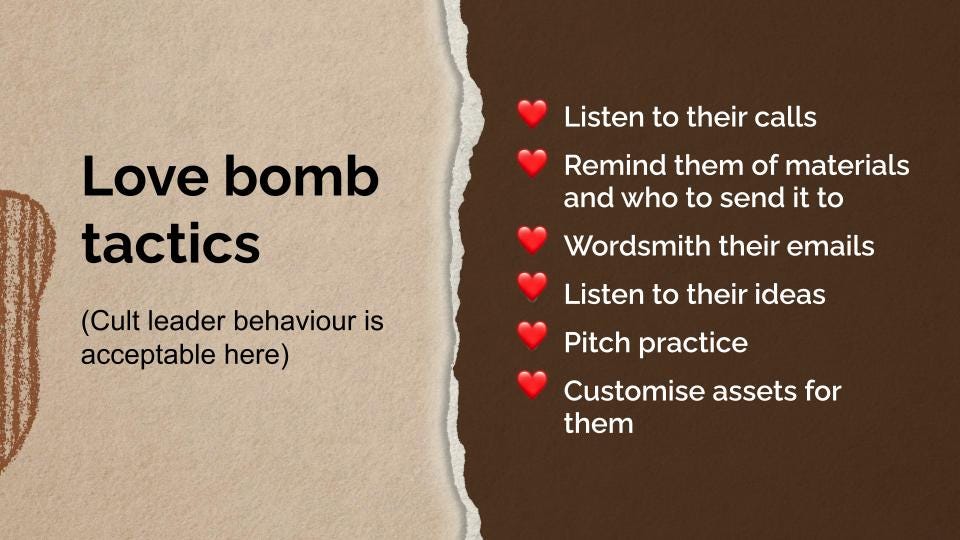📬In this issue:
Building feedback loops with sales teams
How to identify a good sales person to experiment with
Tips from animal trainers
Hiiii Mehketeers,
Welcome to the final issue of Season 9! This is inspired by a keynote I gave at last year’s Generate Summit. It was tips, tricks, and stories I’ve never told in public before, and this issue will be some of that content. Of course, delivering a message on stage vs in a newsletter is very different, so you’ll just have to imagine how funny and charismatic I was on stage while you read this.
While we’re talking about Generate Summit, it’s on again this year and tickets are currently available. I’ll be there, and you should be too!
I am once again in charge of programming, so you know I’ve been extremely annoying in how picky I am of speakers and forcing them to deliver real, tangible value instead of vapid inspo porn with no learnings. Plus, we’ve got the one and only Mark Ritson as our closing keynote!!!!!!!!
As you read this, I’m hopefully recovering from a hangover after partying all night at a destination wedding, so any messages of what you enjoyed this season will greatly boost my spirits.
Enjoy!
The problem in the sales <> marketing relationship
Often I find a lot of marketers who say they have a great relationship with their sales team are actually in denial. They may have great interpersonal relationships — they get lunch together, they have catch ups, they’re friends — but their workinng relationship leaves much to be desired:
Sales don’t adopt the marketing materials provided
Sales don’t proactively provide feedback on what they’re hearing in the market to marketers
Marketing is viewed as a lead generator and the team who make things pretty
It’s very one sided where marketing chases sales
If you resonate with this, or in general just feel that your relationship with your sales team could be improved, here’s how I’d go about it.
Step 1: Pick your cover story
Saying “ok everyone, we’re introducing a new meeting to sync up on XYZ” is a fast way to kill the mood. Instead, you need to address building this relationship as a project that you can’t tell anyone is a project.
Successful cover stories I’ve used include basic things like “I want to understand how the sales team functions more” and “I want to be more helpful” through to “we want to introduce a new sales incentive for best demo call” or “we’re showcasing employees on the company LinkedIn.”
Flattery is everything, and what you’re looking for here is an excuse to be up in their business without them finding it annoying.
Step 2: Pick one sales person to work with
There are three types of sales people:
The one who exceeds target consistently
The average sales person who makes target just in time, most of the time
The below average, on a performance place or won’t pass probation sales person
Pick someone who’s just below a 2. They can make target, but it’s often at the last minute, or they just miss target. They have enough room for improvement that any progress you make with them will be noticable, and they have enough motivation to want to work with you.
If you pick an over achiever, you won’t see if you’ve made a difference or not, and if you pick someone who’s too far gone, you might build up a relationship with them just for them to leave the business and then you’re starting all over again.
You may want to tailor your cover story to your sales person!
Step 3: Conduct reconnaissance
You want to gather intelligence on this sales person, their process, their work, their projects, all of it. This can be done over a friendly lunch, it doesn’t have to be an interrogation. The less they feel like you’re digging for information the better it’ll go.
It’s quite easy to frame this as wanting to learn about the sales process, if you’re a junior, however if you’re more senior it gets a bit trickier. If you’ve got a team, you can send in a sacrificial lamb to do this for you.
Here’s some example questions to get the ball rolling:
What are you working on right now?
Where in the funnel are your leads getting stuck?
Which assets or tools do you use the most? (Best to give specific questions here, such as “what do you send in follow up emails, do you include blogs or pdfs?”)
What would you like to spend less time on?
What do you wish you had time to work on?
What parts of the product or pitch do you find most difficult?
What assets do you wish you had?
Step 4: Love bomb your target
Since you’ve got a single salesperson you’re working with, and you’ve got all of their heart’s deepest (sales) desires, you can now spend a disproportionate amount of your attention on them.
Listen to their call recordings and send them relevant marketing materials that would make good follow ups. Help them wordsmith their emails. Listen to their ideas and actually work together to make it come to life. Customise selected assets for just them.
Hopefully, through this process, they start to come to you for attention. Once you’ve got them approaching you, you’ll have built enough rapport to start pushing them a little harder. Reject their crappier ideas or tell them it needs refinement (and offer to do this together.)
Watch their numbers and confidence through this. If it’s going up, give them public recognition. You want to draw the attention of the other sales people who see that having marketing help you actually improves your numbers and makes your job easier. This creates FOMO and begins to change the perception of marketing. This is progress.
Step 5: Show it off
The end goal here is for sales to request for marketing to be present. Whether that’s for briefings for RFPs, their regular sales meetings, planning, or anything else. You want to build a reputation that marketing’s help = actually helpful.
Publicly showcase some of the work you’ve done with your target and broaden your offering to other sales people. You’ll need to pull back on how much customisation you’re doing and make sure your offering is scalable. You should have an idea of which pieces of work was actually worthwhile and what wasn’t. Keep that in mind.
You won’t win everyone over instantly, and that’s ok. This is a 6 month project at minimum and is very reliant on the original relationship you have.
The importance of a closed feedback loop
I mentioned at the start the one-way nature of most sales and marketing relationships. It may have sounded like I meant marketing is doing all the work and sales isn’t. That’s not necessarily the case.
The reason most people (not just sales) don’t give feedback is because in the past they gave feedback, and they felt like it wasn’t worth the effort. Either the feedback never got acknowledged or used, or the amount of effort they spent to put the feedback together wasn’t proportional to the end outcome.
If we train people that feedback won’t be used, they won’t give it.
This is why it’s so important to articulate when and where feedback is incorporated into marketing:
Based on feedback from X person, we….
Thanks to Y person’s suggestion, we updated….
At Z person’s request, we…
Calling out the person*, their feedback, and the work it turned into is not negotiable. Specifics make this believable. How many of us have used phrases like “due to popular demand” in marketing when… no one explicitly requested it?
*Acknowledging some individuals won’t like this, so use their team name
Feedback and building in public
If you’ve given feedback on something, and you then see your feedback get taken on board, you are psychologically more bought in to the success of that thing than if you’d never had anything to do with it.
This is why building in public (i.e. collaboratively with the sales team) is a great idea.
I’ve met many marketers who are scared to show “unfinished” work to a sales team. They say the work needs to be “finished” or else the marketing team looks unprofessional or uncapable.
In reality, the sales team gets handed something they’ve had zero input on, get told it’s fantastic and we’ve worked so hard on it, and then feel like they can’t honestly give feedback on it because it’s too late. Then they don’t use it. Then marketing gets upset their work isn’t appreciated.
So, be messy. Tell sales what you’re thinking of doing, and get their input on prioritisation.
Show them outlines and drafts. Ask them for feedback and ideas. Actually take on some of their ideas even if they’re not that great. Then when you release the work, point out specifically which parts of it were influenced by that feedback.
Thank them for participating. And then see how they’re more inclined to support the work!
It’s closing time
I hope you enjoyed Season 9 of Mehdeeka! It’s officially now on break. Mehdeeka will be back officially for Season 10 some time in the near future.
In the mean time, I’m testing out the Substack chat feature. You can join the chat for Mehdeeka here! I’ll post any cool marketing I see in Europe while I’m there, and then I’ll be fully back before you know it.
Bon voyage,
Kayla






